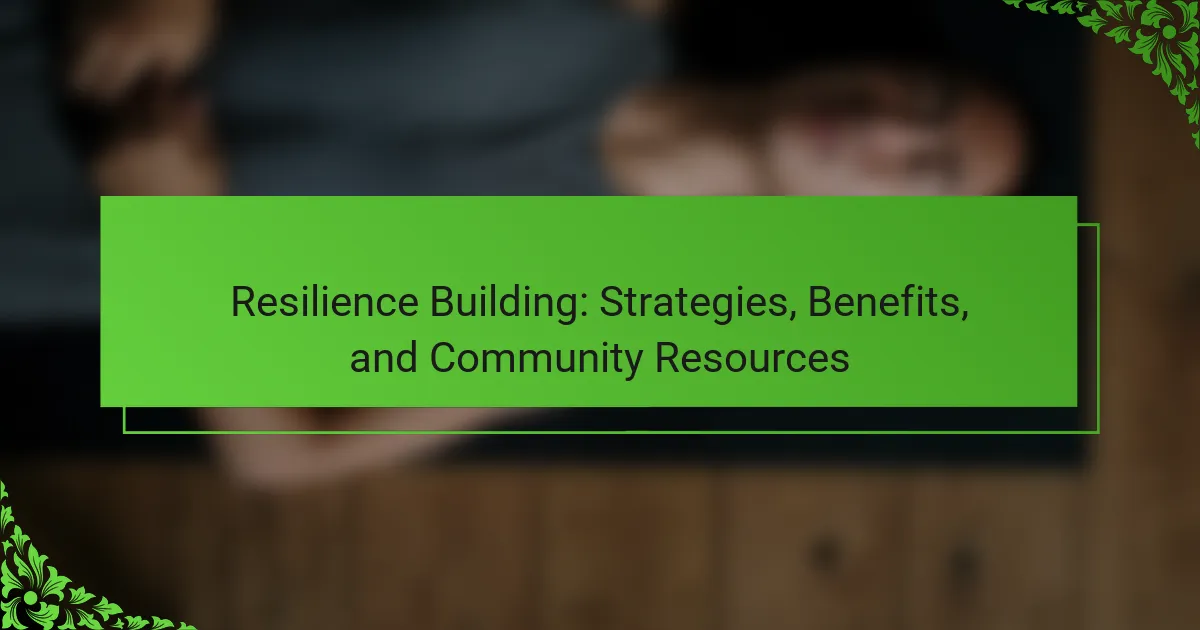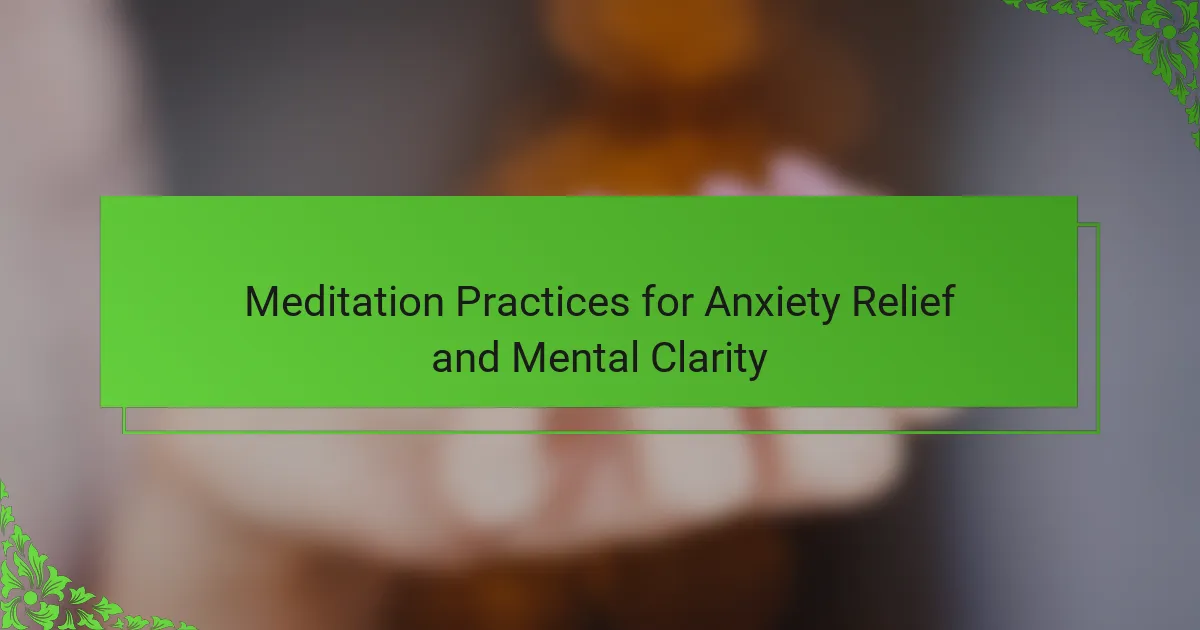Building resilience is essential for navigating life’s challenges and enhancing mental well-being. Key strategies include fostering a growth mindset, developing strong social connections, and practicing self-care. The benefits of resilience extend to improved coping skills and stronger relationships. Community resources play a crucial role in providing support and tailored programs for various demographics.
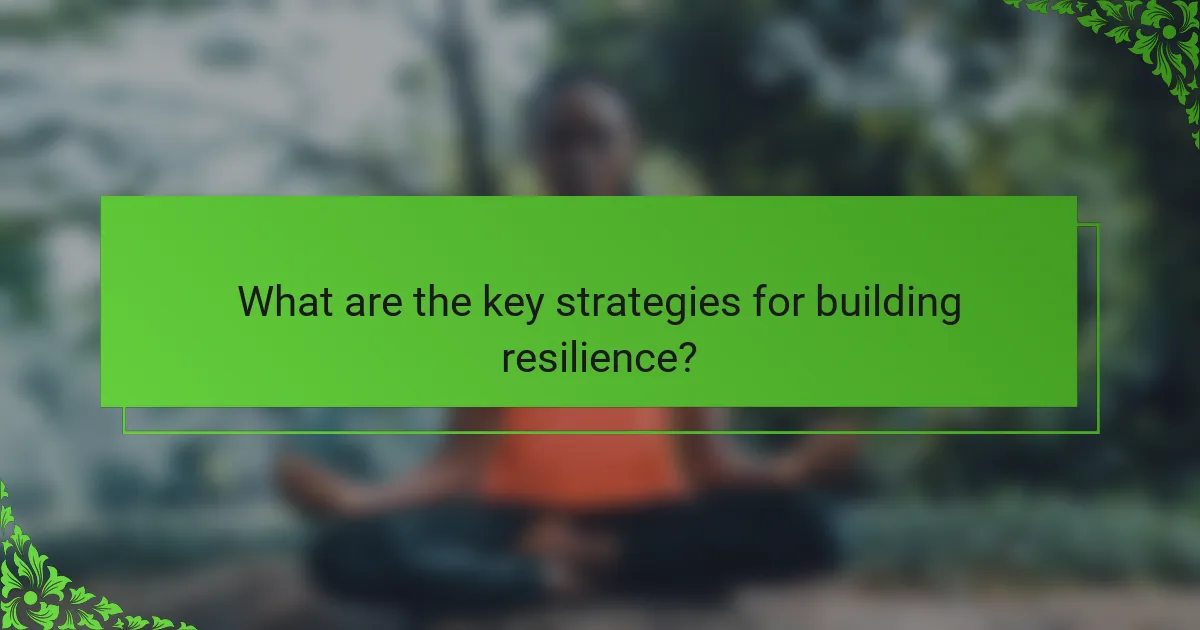
What are the key strategies for building resilience?
Key strategies for building resilience include fostering a growth mindset, developing strong social connections, practicing self-care, and setting realistic goals. These strategies enhance adaptability and promote mental well-being.
1. Foster a growth mindset: Embrace challenges as opportunities for learning.
2. Develop strong social connections: Build supportive relationships that provide encouragement.
3. Practice self-care: Engage in activities that promote physical and mental health.
4. Set realistic goals: Break tasks into manageable steps to maintain motivation.
How can mindfulness practices enhance resilience?
Mindfulness practices significantly enhance resilience by promoting emotional regulation and stress management. They help individuals develop a greater awareness of their thoughts and feelings, enabling better responses to challenges. Regular mindfulness training can lead to improved focus, reduced anxiety, and increased adaptability in difficult situations. Research indicates that mindfulness can decrease the impact of stressors, fostering a more resilient mindset. Engaging in mindfulness activities, such as meditation or mindful breathing, strengthens the neural pathways related to resilience, making it easier to bounce back from adversity.
What role does physical health play in resilience building?
Physical health significantly enhances resilience by improving mental well-being and coping mechanisms. A strong physical state contributes to better stress management, emotional regulation, and overall endurance during challenges. Regular exercise, for instance, boosts endorphin levels, which can lead to improved mood and reduced anxiety. Furthermore, adequate nutrition supports cognitive function and energy levels, reinforcing an individual’s ability to face adversity. Engaging in community health resources, such as fitness programs or wellness workshops, can further strengthen physical health and resilience.
Which cognitive-behavioral techniques are effective for resilience?
Cognitive-behavioral techniques that effectively build resilience include cognitive restructuring, mindfulness training, and problem-solving skills. These methods help individuals manage stress, enhance emotional regulation, and develop a proactive approach to challenges.
Cognitive restructuring involves identifying and challenging negative thought patterns, leading to more positive and realistic thinking. Mindfulness training enhances awareness and acceptance of present experiences, reducing anxiety and increasing emotional stability. Problem-solving skills empower individuals to tackle challenges systematically, fostering a sense of control and competence.
Research indicates that these techniques significantly improve resilience in various populations, including students and professionals facing high stress. Engaging in these practices regularly can lead to long-term benefits in mental health and overall well-being.
How can social support systems contribute to resilience?
Social support systems significantly enhance resilience by providing emotional, informational, and practical assistance. These systems foster connections that help individuals cope with stress and adversity. Research indicates that strong social networks can reduce the impact of traumatic experiences and promote mental well-being. Supportive relationships also encourage positive coping strategies, leading to better outcomes in challenging situations.
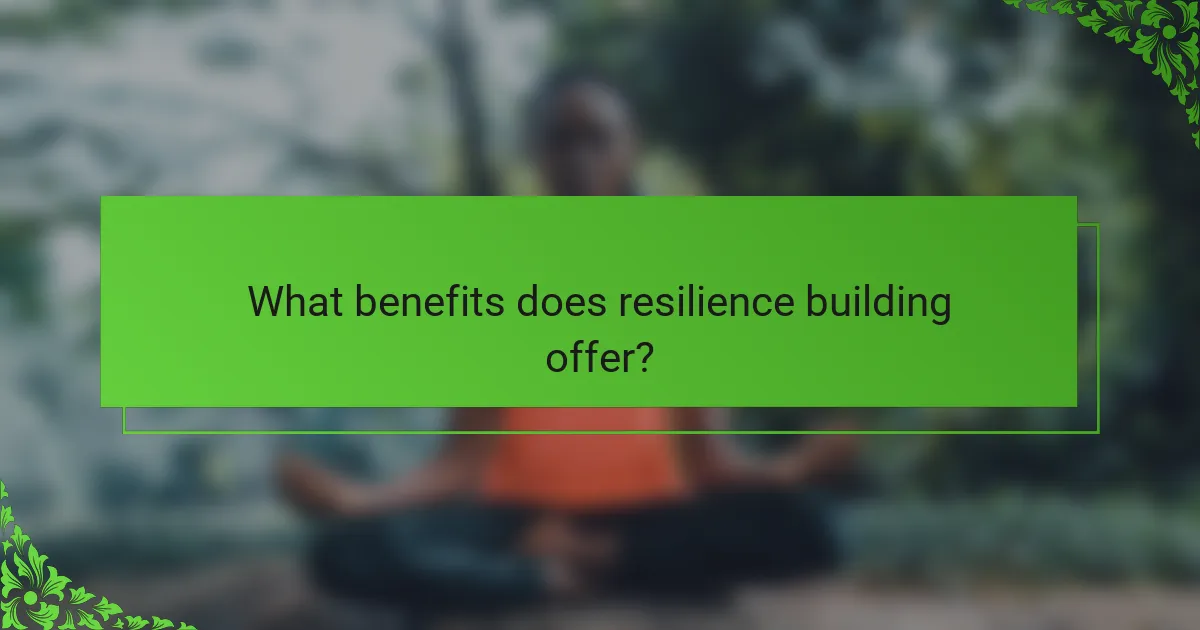
What benefits does resilience building offer?
Resilience building offers numerous benefits, including improved mental health, enhanced coping skills, and stronger relationships. These advantages help individuals navigate challenges more effectively and foster a supportive community environment. As a result, resilience contributes to overall well-being and personal growth.
How does resilience impact mental health and well-being?
Resilience positively impacts mental health and well-being by enhancing coping strategies and fostering emotional stability. Individuals with high resilience can manage stress effectively, leading to lower levels of anxiety and depression. Studies show that resilient people are more likely to maintain a positive outlook, adapt to change, and recover from setbacks. Community resources, such as support groups and mental health workshops, further bolster resilience by providing tools and social connections.
What are the long-term advantages of developing resilience?
Developing resilience offers long-term advantages such as improved mental health, better coping strategies, and enhanced relationships. Resilient individuals often experience lower levels of stress and anxiety, leading to greater overall well-being. They adapt more effectively to change, fostering personal growth and a sense of purpose. Additionally, resilience contributes to effective problem-solving skills, enabling individuals to navigate challenges with confidence. Building resilience strengthens community ties, creating supportive networks that benefit everyone involved.
In what ways can resilience improve personal and professional relationships?
Resilience enhances personal and professional relationships by fostering better communication, empathy, and conflict resolution. It allows individuals to navigate challenges and maintain connections, leading to stronger bonds. Resilient people are more adaptable, which promotes collaboration and trust in teams. As a result, relationships become more supportive and productive.
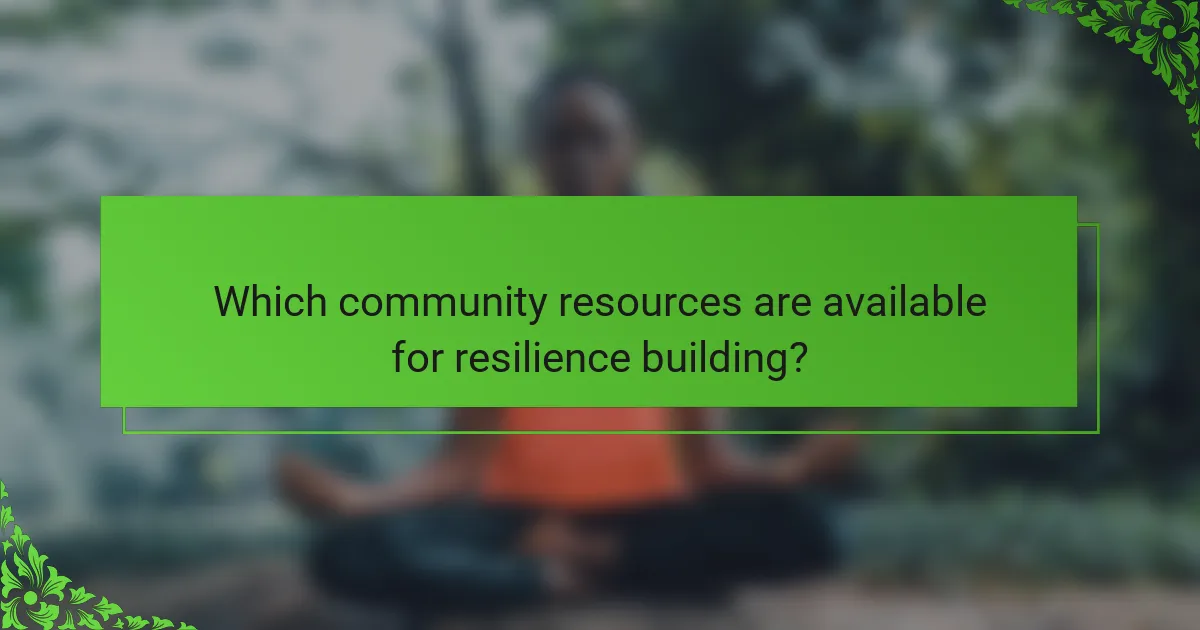
Which community resources are available for resilience building?
Community resources for resilience building include support groups, mental health services, educational workshops, and community centers. These resources provide individuals with tools and strategies to enhance their coping skills and foster a supportive network. Local organizations often offer programs tailored to specific demographics, such as youth, seniors, or families, promoting resilience through shared experiences and learning. Access to these resources can significantly improve community well-being and individual mental health.
What local organizations provide resilience training programs?
Local organizations providing resilience training programs include community centers, mental health organizations, and non-profits focused on personal development. Examples are the American Psychological Association, local YMCAs, and mental health advocacy groups. These organizations offer workshops, seminars, and support groups tailored to various age groups and needs. Engaging in these programs enhances coping skills and promotes mental well-being.
How can schools implement resilience-building programs for students?
Schools can implement resilience-building programs by integrating social-emotional learning, providing mentorship opportunities, and fostering a supportive environment. These programs enhance students’ coping skills and emotional regulation.
1. Introduce social-emotional learning (SEL) curricula to teach self-awareness and relationship skills.
2. Create mentorship programs that connect students with positive role models.
3. Offer workshops on stress management and problem-solving techniques.
4. Encourage peer support groups to promote collaboration and shared experiences.
5. Involve parents and community resources to strengthen the support network.
What role do online platforms play in facilitating community support?
Online platforms significantly enhance community support by providing accessible communication and resource-sharing channels. They foster connections among individuals, enabling the exchange of information and emotional support. These platforms often serve as hubs for organizing local events, workshops, and initiatives that promote resilience building. As a result, communities can mobilize quickly in response to challenges, leveraging collective strengths for problem-solving. The unique attribute of online platforms is their ability to reach diverse populations, ensuring inclusivity and broad participation in support efforts.
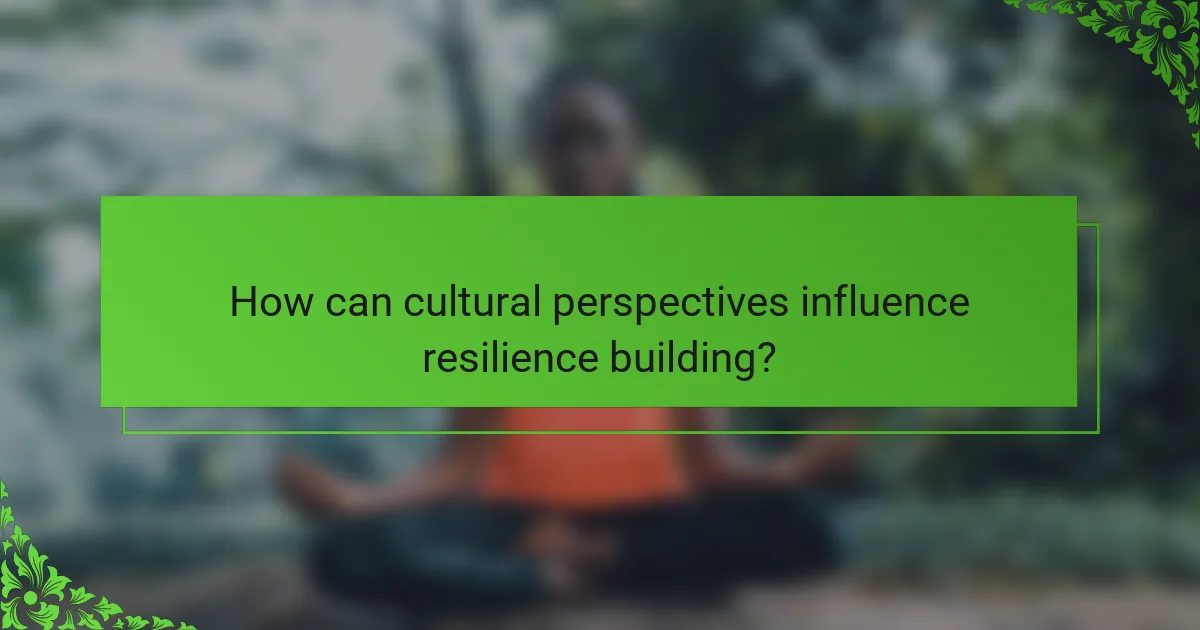
How can cultural perspectives influence resilience building?
Cultural perspectives significantly influence resilience building by shaping individual and community responses to adversity. Different cultures offer unique strategies for coping, emphasizing community support, spirituality, or individualism. For instance, collectivist cultures may prioritize family and community networks, enhancing social resilience. In contrast, individualistic cultures might focus on personal skills and self-reliance. Understanding these cultural nuances helps tailor resilience-building programs, making them more effective and relevant. Additionally, cultural narratives and values can foster a sense of purpose, motivating individuals to overcome challenges.
What unique resilience practices are found in different cultures?
Different cultures employ unique resilience practices that enhance community strength and individual well-being. For instance, Indigenous cultures often utilize storytelling as a means to pass down wisdom and foster connection. In Japan, the practice of Shinrin-yoku, or forest bathing, emphasizes the healing benefits of nature. Similarly, in African communities, communal gatherings and rituals reinforce social bonds and collective support. These practices not only promote mental health but also build social cohesion, demonstrating the diverse ways resilience can be cultivated across cultures.
How do community values shape resilience strategies?
Community values significantly influence resilience strategies by fostering collaboration and shared goals. These values create a supportive environment that enhances collective problem-solving. For example, communities that prioritize sustainability are more likely to implement eco-friendly practices in their resilience plans. Shared cultural beliefs can also drive participation in resilience-building activities, ensuring that strategies align with community needs. Ultimately, strong community values lead to more effective and inclusive resilience strategies.
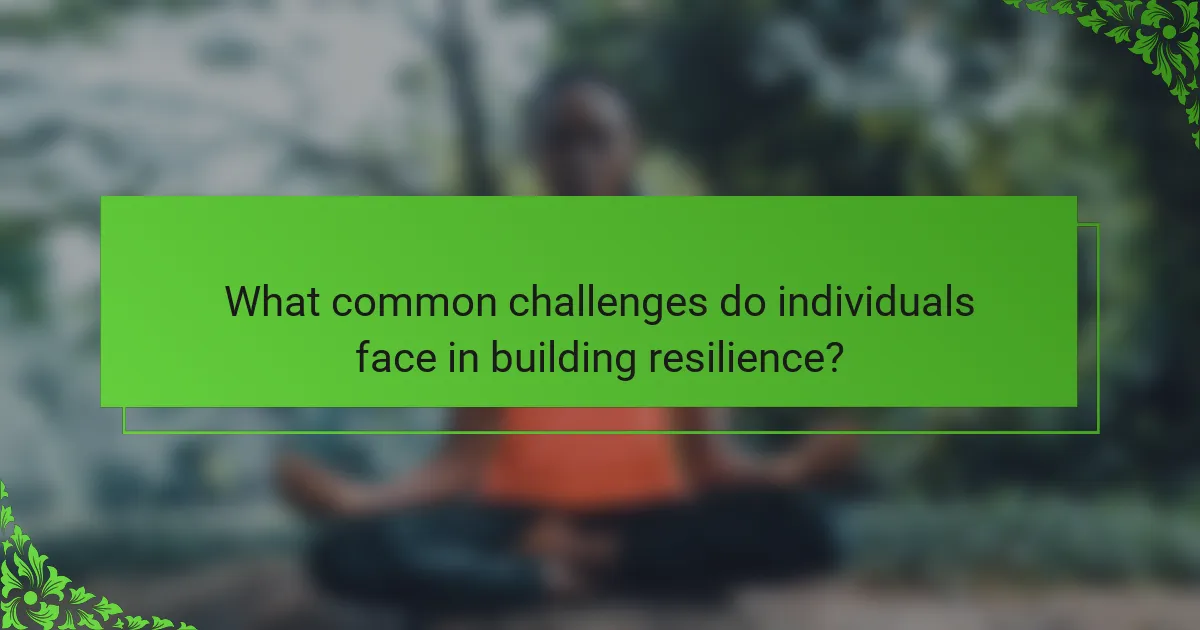
What common challenges do individuals face in building resilience?
Individuals often face challenges such as fear of failure, lack of support, and difficulty managing stress when building resilience. These obstacles can hinder personal growth and coping abilities. Emotional regulation is crucial, as many struggle with negative emotions that arise during adversity. Additionally, a limited understanding of resilience-building strategies can impede progress. Access to community resources may also be inadequate, leaving individuals without necessary support systems.
How can setbacks be reframed as opportunities for growth?
Setbacks can be reframed as opportunities for growth by adopting a resilient mindset. Recognizing challenges as learning experiences fosters personal development. This perspective enhances problem-solving skills, boosts confidence, and builds emotional strength. Community resources, such as support groups and workshops, provide additional strategies for resilience building, helping individuals navigate setbacks effectively.
What misconceptions exist about resilience building?
Many misconceptions about resilience building hinder personal growth. One common myth is that resilience is an innate trait rather than a skill that can be developed. Additionally, some believe resilience means being emotionally stoic, ignoring feelings, or avoiding stress. Others think resilience requires facing challenges alone, neglecting the importance of community support and resources. Understanding these misconceptions can lead to more effective strategies for fostering resilience.
How can individuals overcome barriers to developing resilience?
Individuals can overcome barriers to developing resilience by adopting practical strategies and utilizing community resources. Building resilience involves enhancing emotional regulation, fostering a growth mindset, and seeking support. Engaging in mindfulness practices can improve self-awareness and emotional control. Setting realistic goals helps individuals focus on achievable outcomes, promoting a sense of accomplishment.
Additionally, cultivating strong relationships within supportive communities provides essential encouragement and resources. Participating in group activities or workshops can further enhance resilience by sharing experiences and learning from others. As a result, individuals develop coping skills that empower them to face challenges effectively.
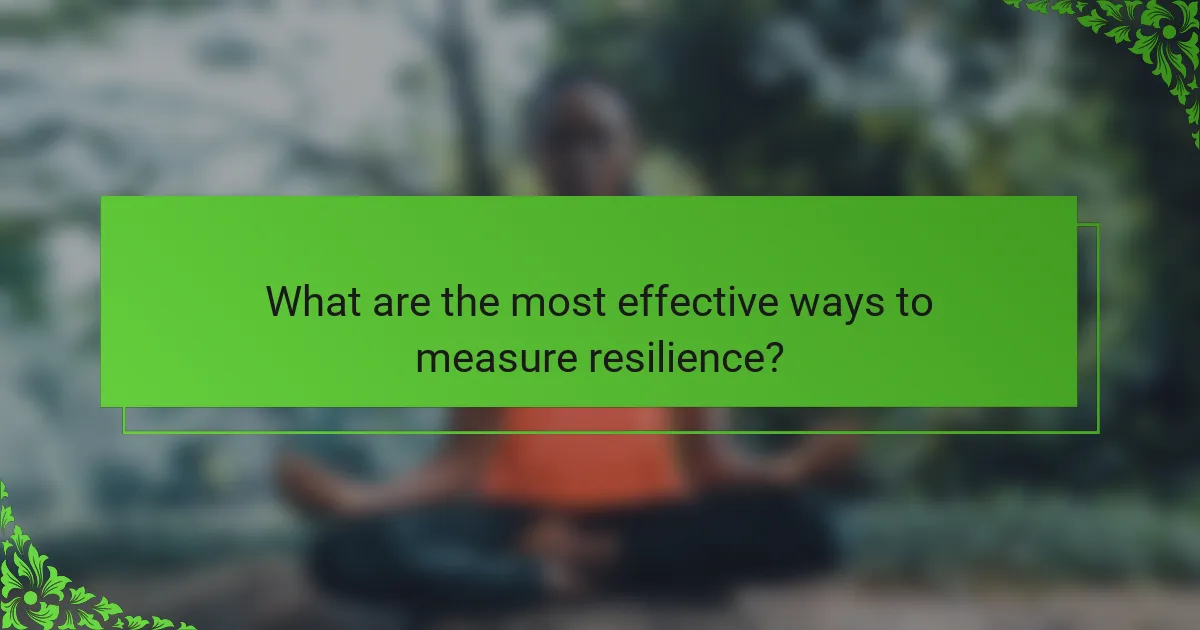
What are the most effective ways to measure resilience?
The most effective ways to measure resilience include self-assessment questionnaires, physiological metrics, and behavioral observations. These methods provide insights into emotional strength, adaptability, and stress management.
Self-assessment questionnaires gauge personal perceptions of resilience. Tools like the Resilience Scale measure factors such as optimism and coping strategies.
Physiological metrics assess resilience through stress-related indicators. Heart rate variability and cortisol levels reflect the body’s response to stress and recovery capacity.
Behavioral observations offer insights into resilience in real-world situations. Tracking responses to challenges and social interactions helps identify adaptive behaviors and support systems.
Which tools and assessments help evaluate resilience levels?
Tools and assessments that evaluate resilience levels include psychological scales, self-report questionnaires, and structured interviews. These methods measure emotional, social, and psychological resilience. Common tools are the Resilience Scale, Connor-Davidson Resilience Scale, and the Brief Resilience Scale. Each tool offers insights into individual strengths and areas for improvement, aiding in personal development and community support initiatives.
How can progress in resilience building be tracked over time?
Progress in resilience building can be tracked over time using various metrics and assessments. Regular evaluations, such as surveys and community feedback, provide insights into changes in individual and collective resilience.
Key indicators include emotional well-being, social support networks, and adaptive coping strategies. For instance, measuring stress levels before and after resilience training can highlight improvements. Community engagement activities also serve as benchmarks, indicating increased participation and collaboration.
Utilizing tools like resilience scales or frameworks can further standardize assessments. These tools help quantify resilience attributes, allowing for comparative analysis over time. Regularly revisiting these metrics ensures that resilience-building efforts remain effective and responsive to community needs.
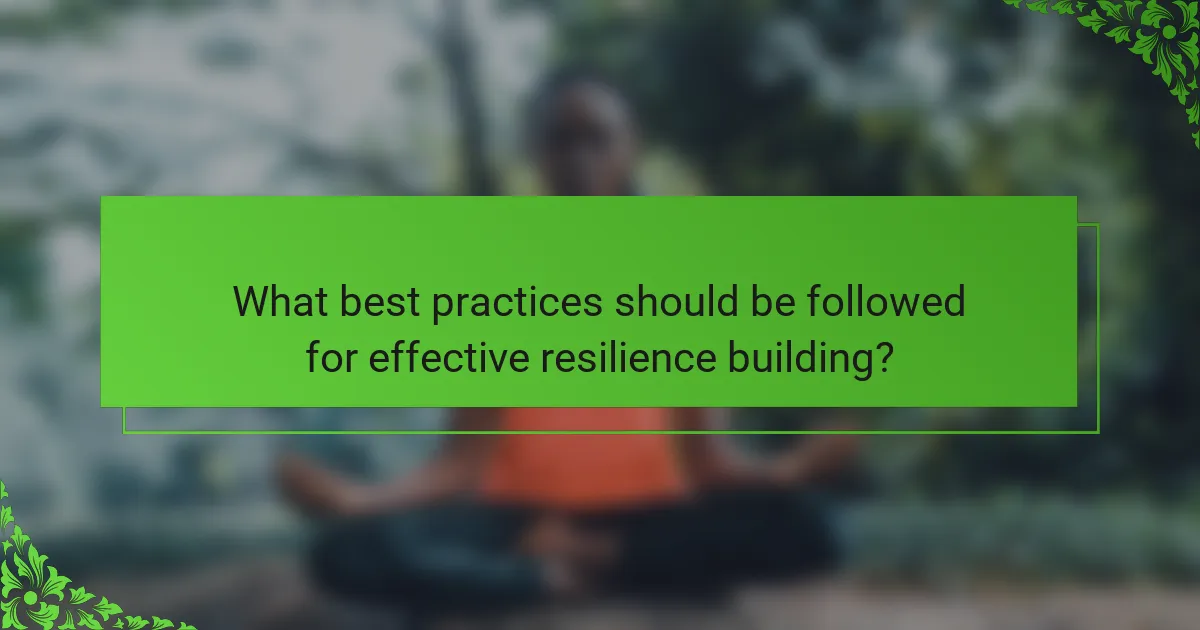
What best practices should be followed for effective resilience building?
Effective resilience building involves adopting strategies that enhance adaptability and mental strength. Key practices include fostering a supportive community, developing strong relationships, engaging in self-care, and setting realistic goals.
1. Build connections: Engage with supportive friends, family, and community resources to create a network of support.
2. Practice self-care: Prioritize physical health through exercise, nutrition, and adequate rest to strengthen resilience.
3. Set goals: Establish achievable objectives to provide direction and a sense of purpose.
4. Embrace challenges: View setbacks as opportunities for growth and learning, enhancing overall resilience.
These practices collectively contribute to improved mental well-being and the ability to navigate life’s challenges effectively.
What expert tips can enhance the resilience-building process?
Building resilience involves practical strategies that enhance coping mechanisms. Focus on fostering a growth mindset, practicing self-care, and developing strong social connections. These elements contribute to emotional strength and adaptability. Regularly engaging in mindfulness exercises can also improve stress management. Additionally, seeking community resources, such as support groups or workshops, can provide valuable tools for resilience-building.
What common mistakes should be avoided in resilience training?
Common mistakes in resilience training include neglecting individual differences, setting unrealistic goals, and failing to measure progress. Avoiding these errors enhances the effectiveness of resilience-building strategies. Understanding personal triggers and strengths is crucial. Additionally, overlooking the importance of community support can hinder resilience development.
